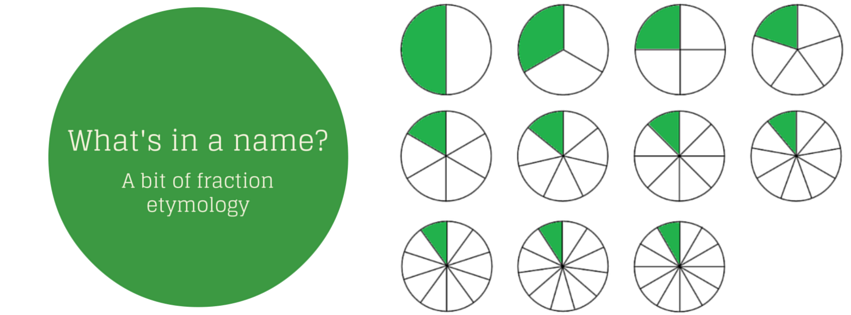Therefore, I really enjoyed a post from Don Steward earlier this year, pointing out that the word "denominator" contains part of the French word "nomme", meaning "name". As even Year 7 are used to writing this on the front of their French exercise books, it served as a useful reminder of exactly what a denominator is - it's the name or type of fraction. The 3 in 2/3 denotes that these fractions are called thirds, and we're splitting into three bits.
It's always surprised me just how resistant people are to writing division as a fraction. Historically, we've had fractions for much longer than our base 10 number system, and even the Egyptians (see Math Like an Egyptian), who used hieroglyphs rather than numbers, represented a fraction by writing the numerator (in their case, 1) above the denominator. This continued in Sanskrit practice during the first millenium AD, developing to fractions with denominators that weren't 1, and dealing with mixed numbers - Sanskrit mathematicians would have written the fraction 4 1/2 as 4 1 2 in a vertical line.
Arabian mathematicians added the line in between the numerator and denominator (called avinculum) a little later on, and this practice then spread to Medieval Europe along with the Arabian numeral system that we use today.
Conversely, the obelus (÷) - the division symbol that all primary pupils will be used to - didn't appear until a book written in 1659 by a German mathematician called Johann Rahn, which was subsequently translated into English by John Pell. Up until that point, mathematicians were using a variety of symbols to represent division, including an open bracket or a colon (now used exclusively for ratio notation). The obelus was, confusingly, also being used to represent subtraction in some parts of Northern Europe.
Although there's an argument that the two representations have their places in mathematics (perhaps 1 divided by 3 as 1 over 3 implies that you want the exact answer of one third, whereas writing 1 ÷ 3 expects the recurring decimal answer 0.333...), I'd wonder if the increasingly frequent use of computers will render both forms of notation redundant, and whether, in a few years' time, if we'll all be writing 1/3 instead...
You might also want to check out this post from Matthew Compher, which looks at misconceptions that can arise from over-reliance on the obelus.

 RSS Feed
RSS Feed
